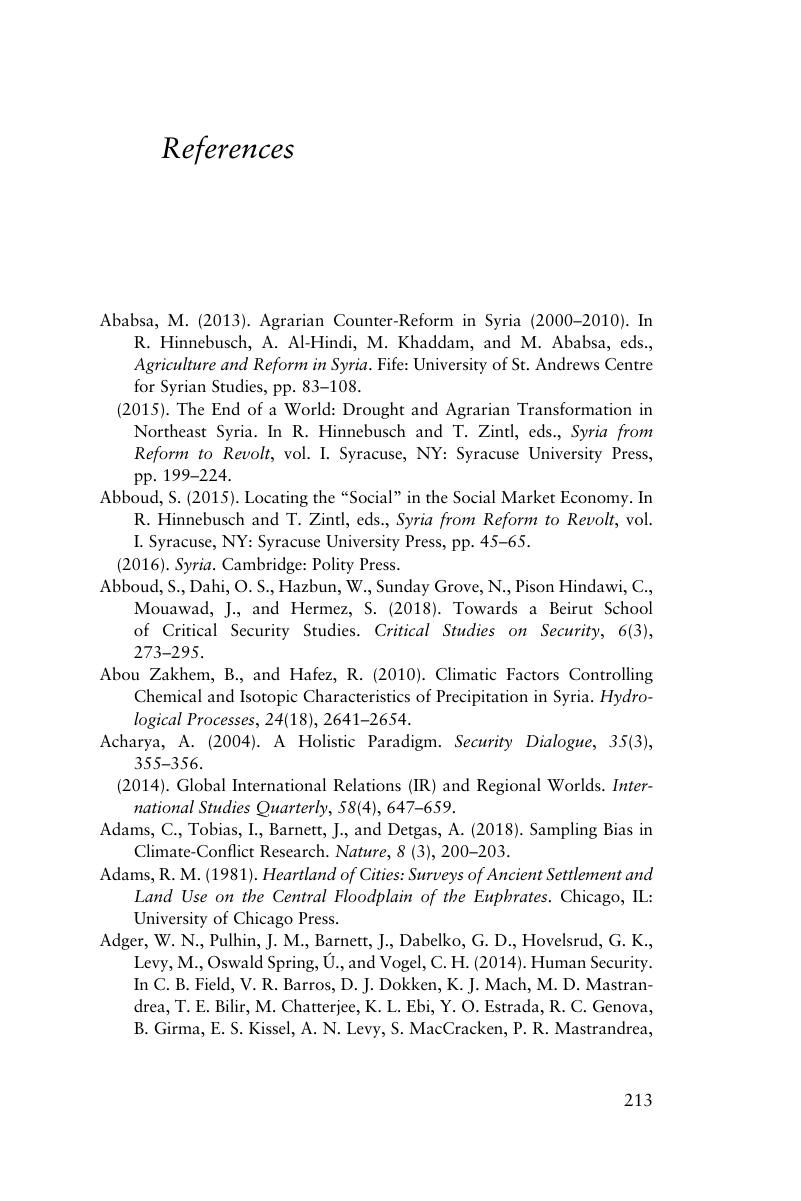References
Published online by Cambridge University Press: 05 March 2020
Summary

- Type
- Chapter
- Information
- The Origins of the Syrian ConflictClimate Change and Human Security, pp. 213 - 245Publisher: Cambridge University PressPrint publication year: 2020



